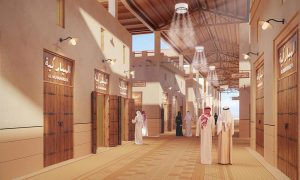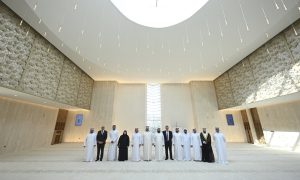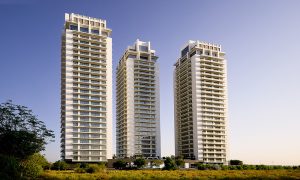Project profile: Kuwait City road development works
Big Project ME profiles the Jahra Road and Jamal Abdul Nasser Street projects and learns how they are transforming the western region of Kuwait
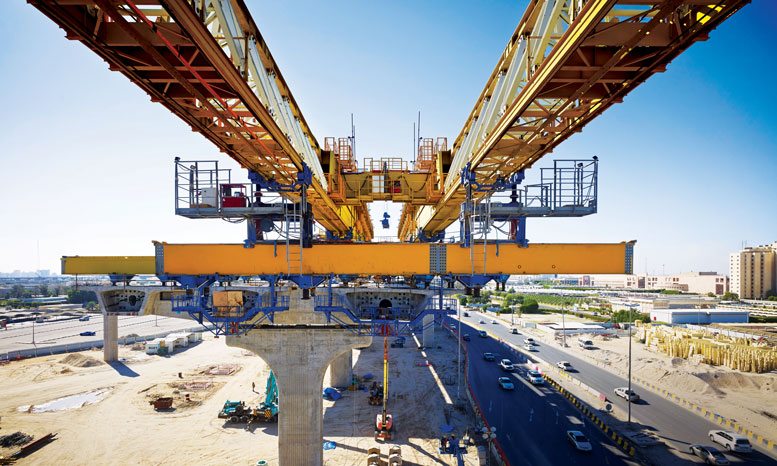
The Jahra Road (RA166) and Jamal Abdul Nasser Street (RA/167) development projects are two strategic ventures put forward by the government of Kuwait as part of the state’s ongoing plans to further enhance the existing infrastructure and transportation network. The joint venture of Pace and Louis Berger has been employed to undertake the design and construction supervision of the projects.
The implementation in progress aims to transform the existing roads into internationally standardised multi-level expressways extending 10 to 11 km across the western region of Kuwait. The scope of work also includes upgrading and reconstructing the existing service roads to provide additional traffic lanes with enhanced new, or relocated, utilities infrastructure.
The projects are interconnected within a network of newly developed highways including the Jaber Causeway and Doha link. This network will serve the city’s transport infrastructure and the highways are the main routes to reach the newly developed urbanising projects which are the Silk City project and Mubarak Al-Kabeer Seaport.
During planning, Pace/LB directed the implementation of the projects to take place over five phases of work each. Reasons for phasing included:
- Phasing traffic detours, which facilitates traffic flow in congested areas
- Relocation of services in phases, as per the technical specifications of these services
- The necessity to complete Phases 1 of each project at an early stage
- The nature of segmental erection requires commencing the works from one end of the project, then proceeding in a linear sequence.
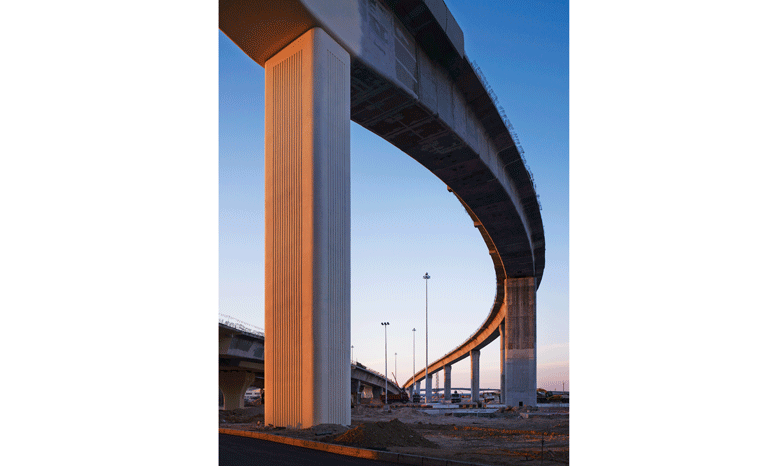
Nick Merrick © Hedrich Blessing
Structures
Both projects, in their design, planning and construction, stand as two engineering marvels whose calibre can be measured by the advanced bridge building methodologies employed. The large-scale structural works make these giant projects two of the largest multi-level road projects in the world.
Attempting this outstanding upgrade for two of the most vital arteries in the busy metropolis of Kuwait City, Pace/LB employed very intricate and well-studied methods of construction that minimise any impediment or disruption of traffic flow, and do not perturb public environment dynamics.
The undertaking of this grand infrastructure development entails a series of sophisticated large-scale operations. Its engineering, and complexity of location, required the use of the latest innovations in bridge constructions, involving the use of precast segmental erection with overhead launching gantries. Pace/LB established two of the largest purpose-made high-tech precast facilities worldwide for these projects.
For the two elevated mainlines of the projects, five launching gantries were imported and assembled (three for RA/166 and two for RA/167) to mobilise the precast segments. Pace/LB erected the Jahra Mainline viaduct via balanced cantilever, whereas the segmental span-by-span erection method was introduced for the Jamal Abdul Nasser Mainline viaduct. The remaining entry/exit ramps for both projects are being constructed mostly with various crawler and vehicle-mounted cranes via segmental balanced cantilever as well.
Services and Utilities
Project works also entail the renovation of a number of utilities and drainage structures along the length of the project routes. This includes the relocation, protection and refurbishment of water lines and sewage system, telephone services, gas lines and voltage cables.
Precast Yard
Pace/LB set up two precast yards for the projects on a remote area of land in Doha district, with a total surface area of 280,000sqm. The Yards are fully utilised with large-scale segment pre-cast technologies and machinery including mould production frames, heavy gantries, water tanks, storage and curing facilities, as well as staff offices and concrete batching plants.
The precast yards provided a greater space for segment fabrication works, along with a suitable environment where Pace/LB could maintain quality of the segments’ fabrication with regards to consistency and strength requirements.
Other advantages included easy geometry control, an elevated speed of overall implementation and high quality control, which guaranteed the construction of more durable bridges that should require very little maintenance, in addition to very limited or no public disturbance.
Detours
Closing the entire road for construction works was not an option. Pace/LB had to find, design and develop alternate traffic routes for road users to reach their daily destinations in collaboration with the traffic authorities. Traffic detours, however long they extended, maintained the same properties of the original road including the number of traffic lanes, road width, services and all necessary road and detour signage and markings. Pace/LB managed the construction of temporary detours in accordance to all international standards, comprising all the qualities of a well developed road in terms of asphalt quality and safety.
Environment and Construction Safety
Every construction job on-site has to be strictly executed within all environmental standards and regulations formulated and developed periodically by the Environmental Public Authority. The projects require a certified specialist from Pace with the commission to raise a monthly report to the EPA on all environmental impacts caused by the project.
The report includes a monitoring log of occurrences around the project areas taken through field measurements during daily site visits. Determining air quality, noise levels, groundwater quality, water sanitation, solid waste and liquid waste confirms the implementation requirements under the contract. A mobile laboratory was set up across the construction sites for measuring emissions and toxic readings.
Also, the existing planting and greenery lost during implementation of the project will be compensated for with Pace’s additional final landscaping, which will cover more than 300,000sqm when the project is complete.
Pace/LB’s safety applications include:
- Setting up multiple mobile clinics for the safety and health of workers along the project line
- Providing periodic lectures on safety and security for workers in about 10 languages (due to multiple nationalities present)
- Holding contests as a motivational factor for the best candidate following the instructions of health and safety in a monthly event called Safest Worker of the Month
- Firm and strict safety supervision on-site, plus the application of international standards and safety regulations which include the use of helmets, jackets and other machine associated safety gear such as harnesses and belts, the proper set-up of banners, barriers and all signboards
- Preliminary inductions on personal protective equipment
- Specific operations and toolbox training
- Safety training for sub-contractors as well.
Corporate Social Responsibility:
Training programs:
As part of their social responsibility agenda, Pace and LB constantly develop standardised training programmes for new engineers and university students which entail several educational lectures on the projects’ structural works, utility development works and project management.
The students also receive exceedingly valuable engineering substance through supervised practical application and field work on construction sites, including the pre-cast yard.
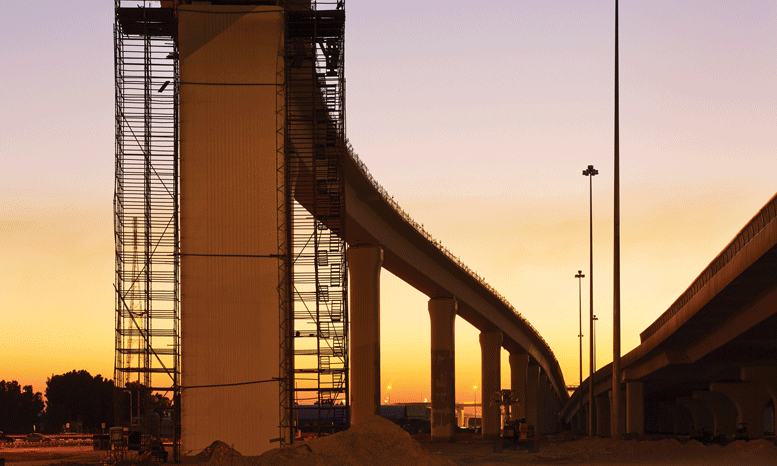
Nick Merrick © Hedrich Blessing
Project Objectives:
- Segregate between bypass traffic and local traffic flow via elevated highways
- Increase the highway capacities thereby minimising traffic congestions
- Reduce traffic accidents
- Meet future traffic demands
- Improve road facilities and services
- Improve road safety standards
Efficient transport infrastructure
The upgraded Jahra and Jamal Abdul Nasser highways will serve as efficient transport infrastructure for the road’s adjacent influential existing establishments, which are:
Educational: Kuwait University – Public Authority of Applied Education and Training
Health: The Sabah/Shuweikh medical zone
Governmental: Ministry of Defence – Ministry of Health – Ministry of Education – Ministry of Oil –State Audit Bureau
Commercial & Trade: Kuwait General Administration of Customs – Shuweikh Port – Industrial Shuweikh Area – high-brand showrooms
Residential: Grenada Area – Shuweikh Residential Area
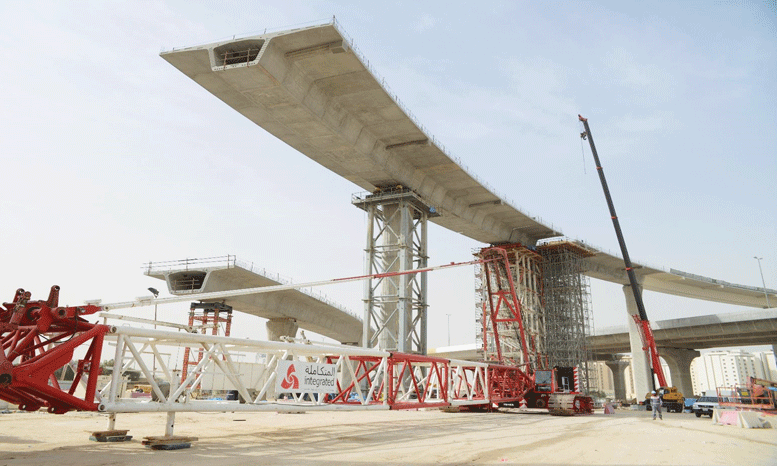
Nick Merrick © Hedrich Blessing
Project Works:
The total construction cost has reached almost 500 million Kuwaiti dinars for both projects. Major project components include:
Nasser Road
- 18km of elevated segmental viaduct bridges: 8km for elevated Nasser Road mainline along 10km exit/entry ramps
- 716m of depressed road (underpass)
- 3 multi-level interchanges with major highways
- Development of 20km of ground level and service roads
- 9 ground level roundabouts replacing traffic signal intersections
- 130,000sqm precast yard
- 8,600 bridge segments
- 8 pedestrian overpasses
Jahra Road
- 17.7km of elevated segmental viaduct bridges:7.3km for elevated Nasser Road mainline along 10.4km exit/entry ramps
- 620m of depressed road (underpass)
- 5 multi-level interchanges with major highways
- Development of 18.5km of ground level and service roads
- 7 ground-level roundabouts replacing traffic signal intersections
- 150,000sqm precast yard
- 8,390 bridge segments
- 10 pedestrian overpasses
Progress Updates:
Jamal Abdul Nasser Street Development Project:
- Overall progress: 83%
- Completed structural works: 89%
- Completed utility works: 65%
Sectional openings on Jamal Abdul Nasser Street:
- 5 opening of viaducts: 8km of elevated mainline in both directions + 4.2km of exit/entry ramps.
- Service Roads: 4 openings
Jahra Road Development Project:
- Overall progress: 92%
- Completed structural works: 94%
- Completed utility works: 98%
Sectional openings on Jahra Road:
- 6 openings of viaducts: 7.3km of the elevated mainline in both directions + 9.5km of exit/entry ramps.
- Service roads: 6.2km
- Upcoming sectional openings, mainly of service roads, will be taking place in both projects throughout this year

Nick Merrick © Hedrich Blessing
Challenges of the projects:
Undertaking the projects in a fully populated and busy urban area, with such limited work zones, required intricate and faultless planning to avoid logistical issues. The Pace/LB JV was successful in effectively managing the risks and challenges to a positive conclusion and meeting the completion dates.
Main challenges included:
- Construction in constricted work areas with minimal rights of way
- Maintaining effective communication in the coordination processes with different parties and concerned authorities involved in the project, including ministries, the municipality, contractors, subcontractors, media and owners of establishments located along the projects’ routes
- Obtaining the necessary approvals from the above parties and authorities
- Frequent follow-ups to ensure most efficient document control management
- Detour facilitation procedures
- Undocumented changes to the underground network of utilities and services that appear unexpectedly during excavations
- Extreme weather conditions and other factors affecting concrete casting operations and on-site productivity.
- The existing heavy traffic density on the road due to the presence of services like hospitals, universities and institutes.
- The procedures of procurement of equipment, machinery and materials imported from abroad, which require early planning and coordination with several parties to meet construction schedules.



